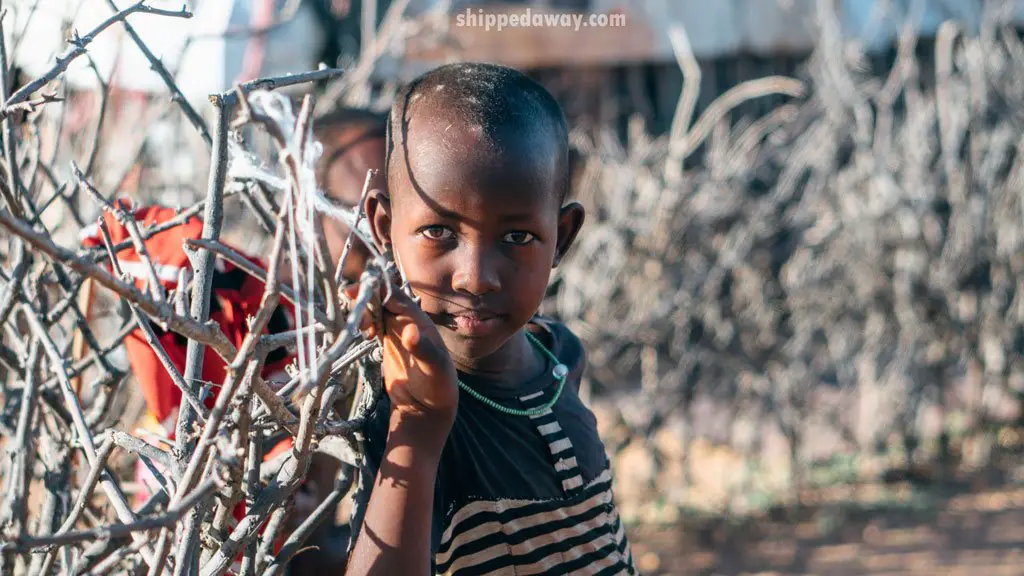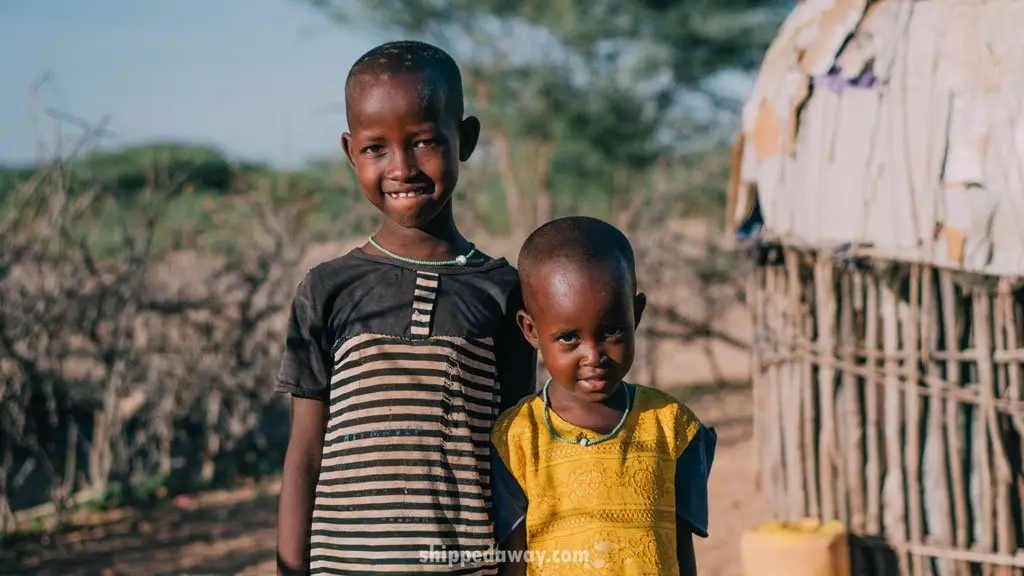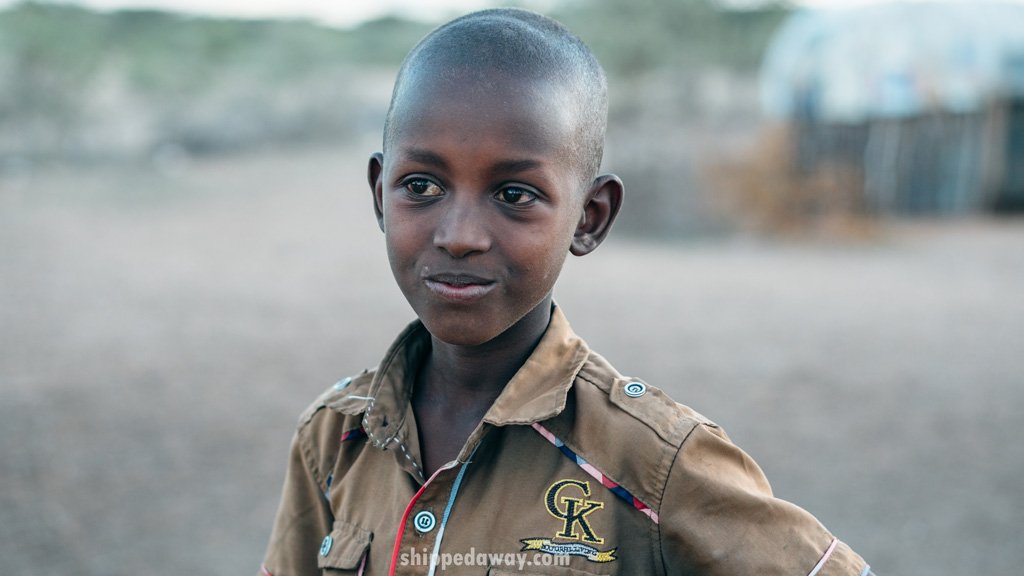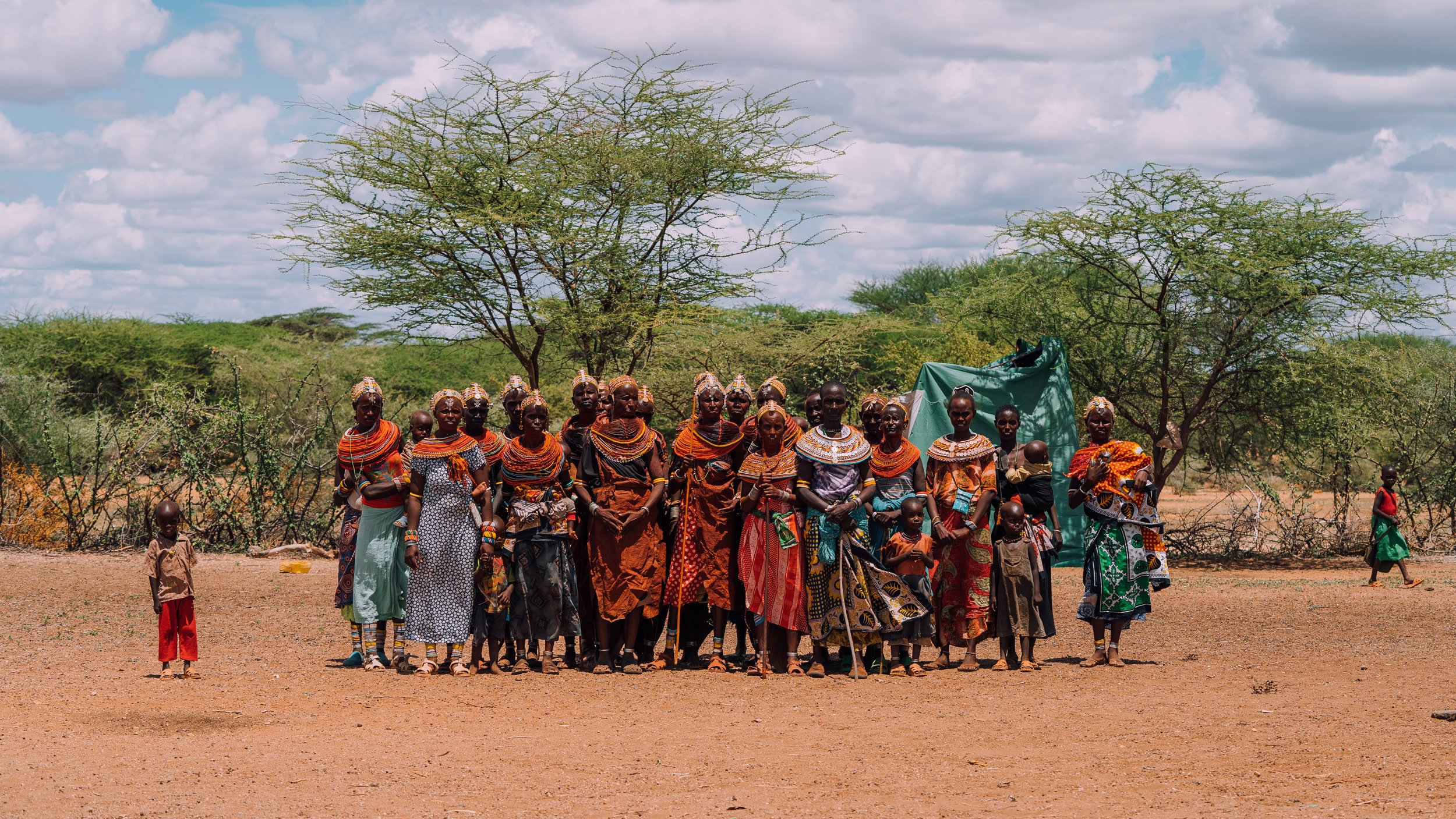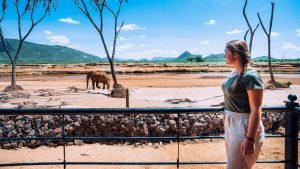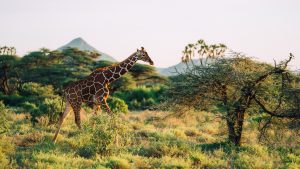
Warm welcome of the Maasai Samburu tribe
After a 6 hours car drive from Nairobi, we arrived at a similarly named, but drastically different tiny place called Nairibi, a place not found on any maps. Another hour of driving through sandy roads and getting stuck in the sand three times, and we’re finally there. Everyone was greeting us, smiling, and shaking hands. Kids were a bit scared at first as we were the first white people they have ever seen, but that didn’t last long, as soon they were waving, laughing, and playing with us. The kind tribe people showed us our hut where they made us beds with improvised mattresses to feel more at home. They sleep on cowhide, so this helped us a lot as I don’t think we would have had a good night’s sleep otherwise.
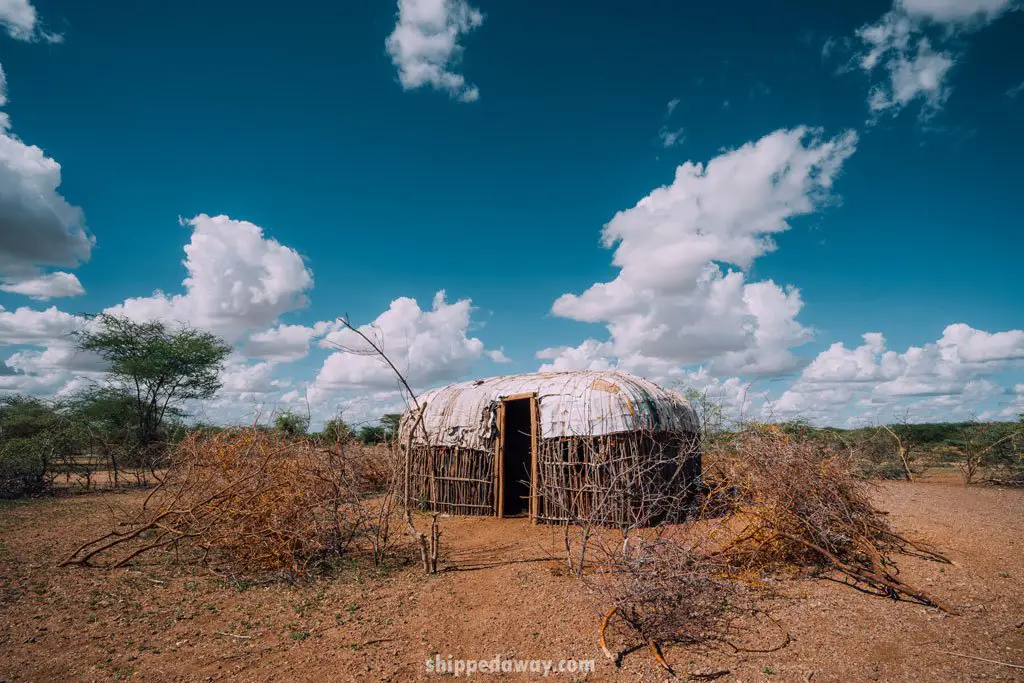
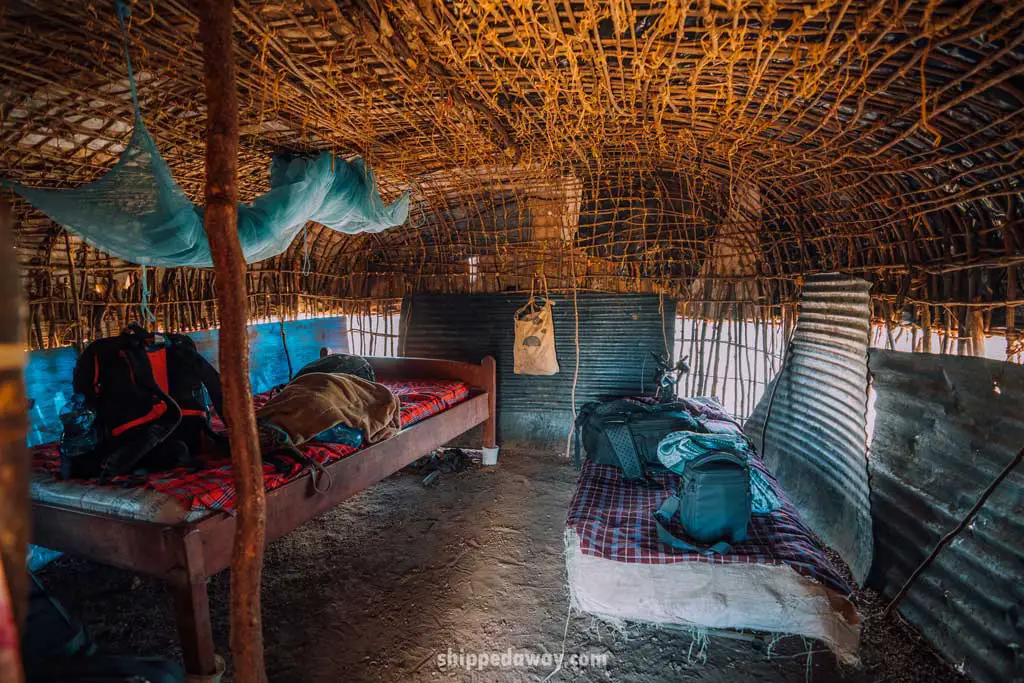
Safety in the middle of the desert
As seen in the photo above, each hut is surrounded by a fence made of thorns, to keep any animals (mostly hyenas) away. You have to be careful even while walking around because once you step on it, it goes straight through your shoe into your foot. There is a massive fence around goats, the most valuable possession of the tribe, and one around the whole village too. Before the first night, they also told us „Don’t worry, we have a dog too.“
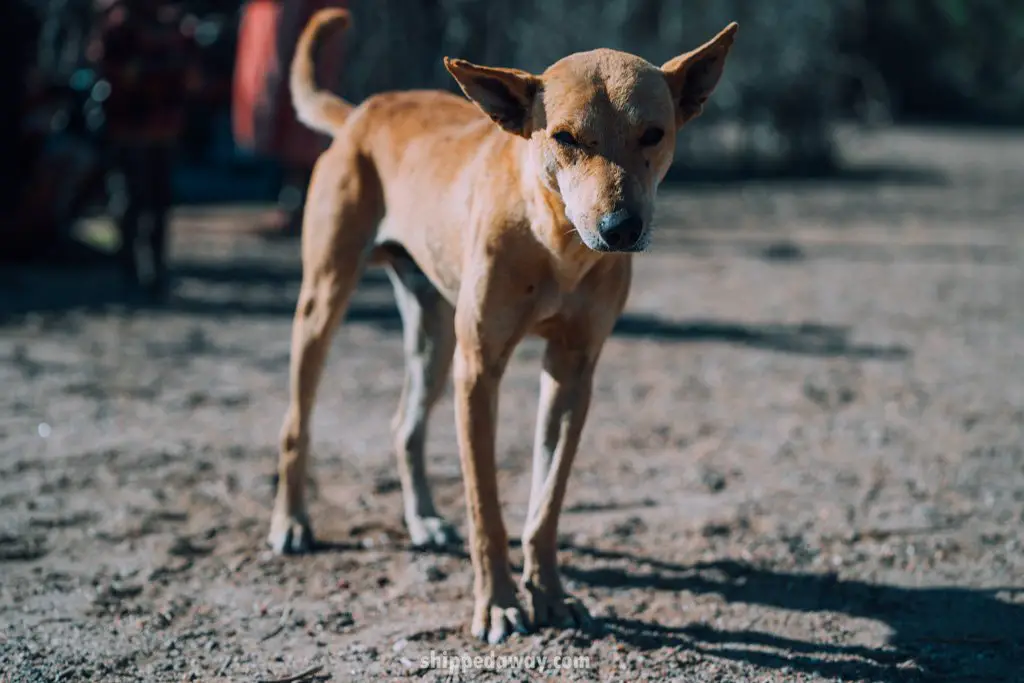
Our host Ngariyon
Meet Ngaryion, the woman that welcomed us in her family. She is around 30 years old, was married at nine, and has five children. She did not go to school. Her role in the family is to take care of children and animals. Success for her is to have as many children as possible (her goal is eleven). After marriage, she’s not allowed to say her husband’s name out of respect for him. If she does, she owes him a goat. Her biggest wish is to learn English and travel at least a little bit around Kenya.
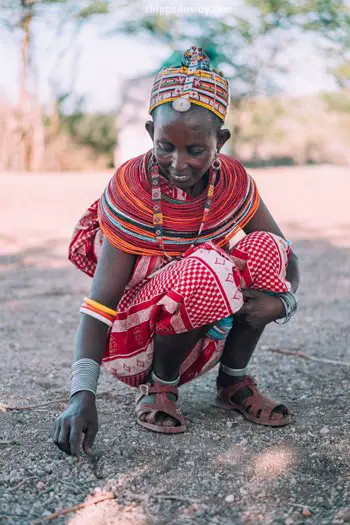
There is a rule in their village to sacrifice a goat if someone comes to visit. That way they welcome you and show you respect, as goats are the most valuable things they own. As nice of a gesture as that was, I was shocked when I saw a woman collect the blood from the goat they killed and then drink it. „It’s for the energy,“ she said. Although I wouldn’t drink blood to get energy, I respect their way of life, and this for sure was an interesting moment to see.
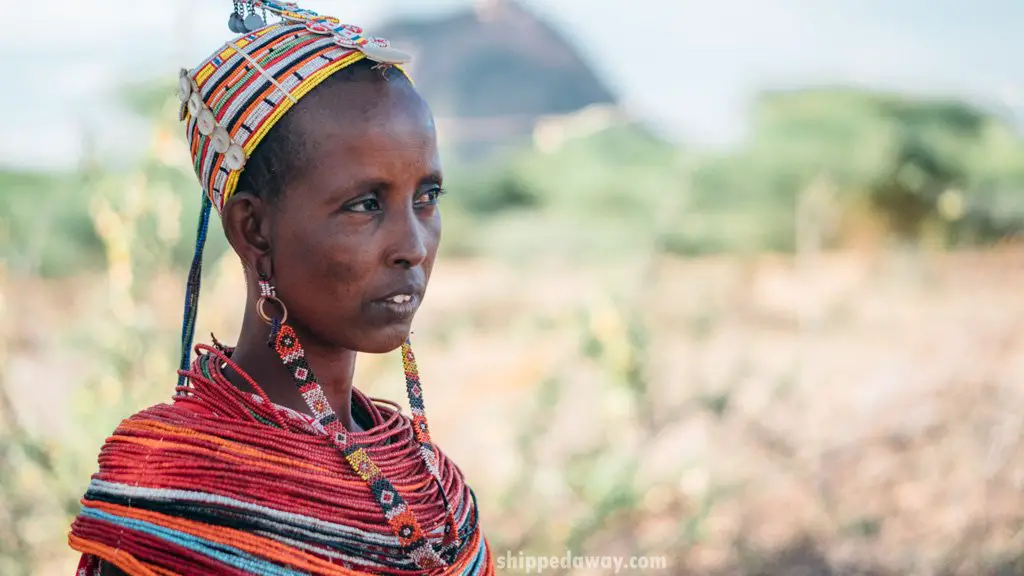
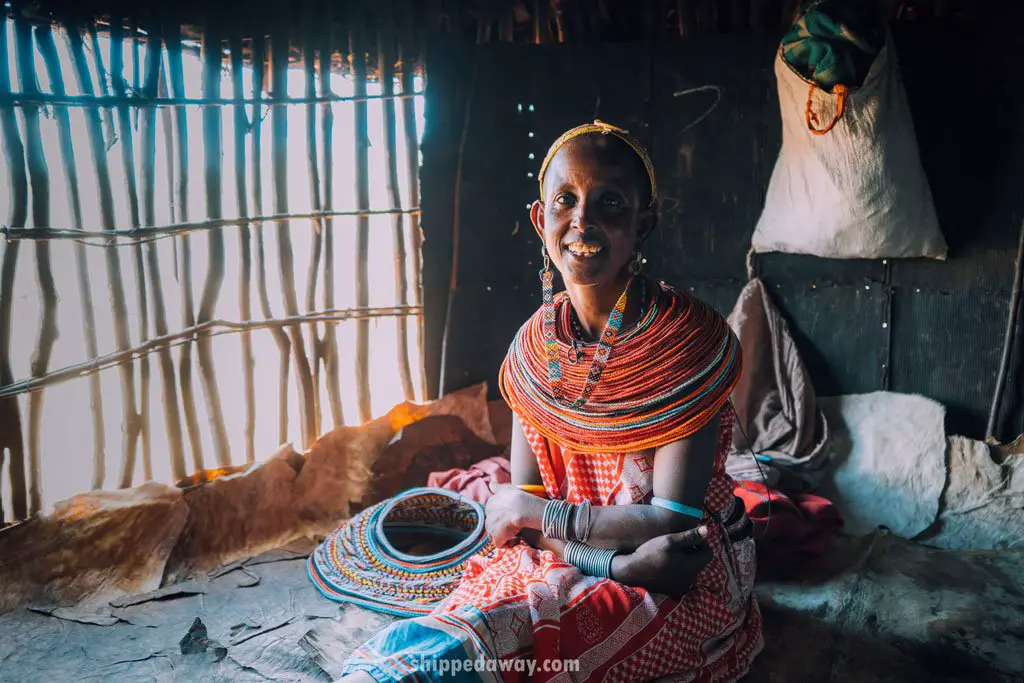
How does the day of the Maasai Samburu look like?
The women wake up at sunrise to milk the goats and then let them go with one child who takes care of them the whole day, then they take the rest of the children to school about 20 minutes away. Afterward, they bring home water in barrels (the only way to get water). When all that is done, they prepare for a praying session that lasts until the evening. In the evening they milk the goats again and then make dinner for the family. After the sun is down everyone gets back into their huts, chat a bit, and then go to sleep.
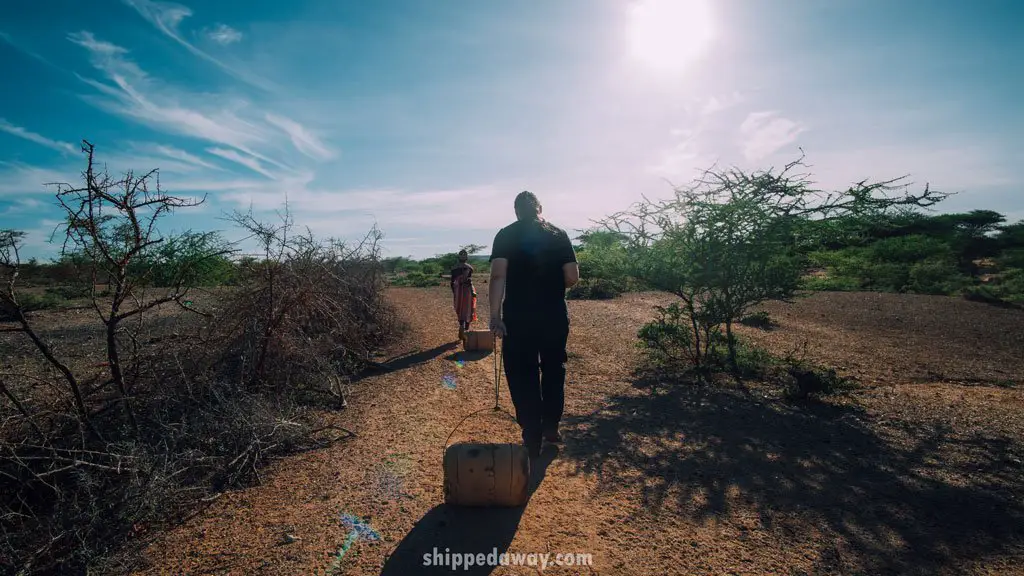
What do men do? They usually just lay around the whole day, chat with each other, and do nothing. They don’t have any important roles inside of the village, just outside at markets, etc. So we could say life is a bit easier for them, at least from what we saw.
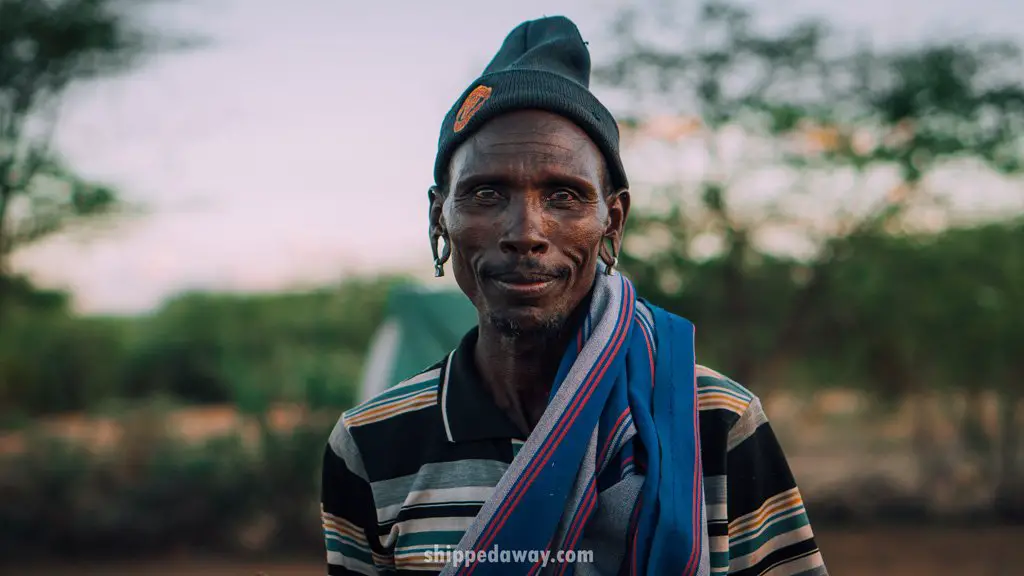
What about education?
Nowadays, education is mandatory in Kenya, so most of the kids from the tribe go to school. However, they can’t be forced. Most of them only go to primary school, as high school is too expensive for these families. The ones that make it to high school have to move from home during education, and they are more likely to find a job outside the village or even go to college. However, they never forget where they came from, and they keep coming back.
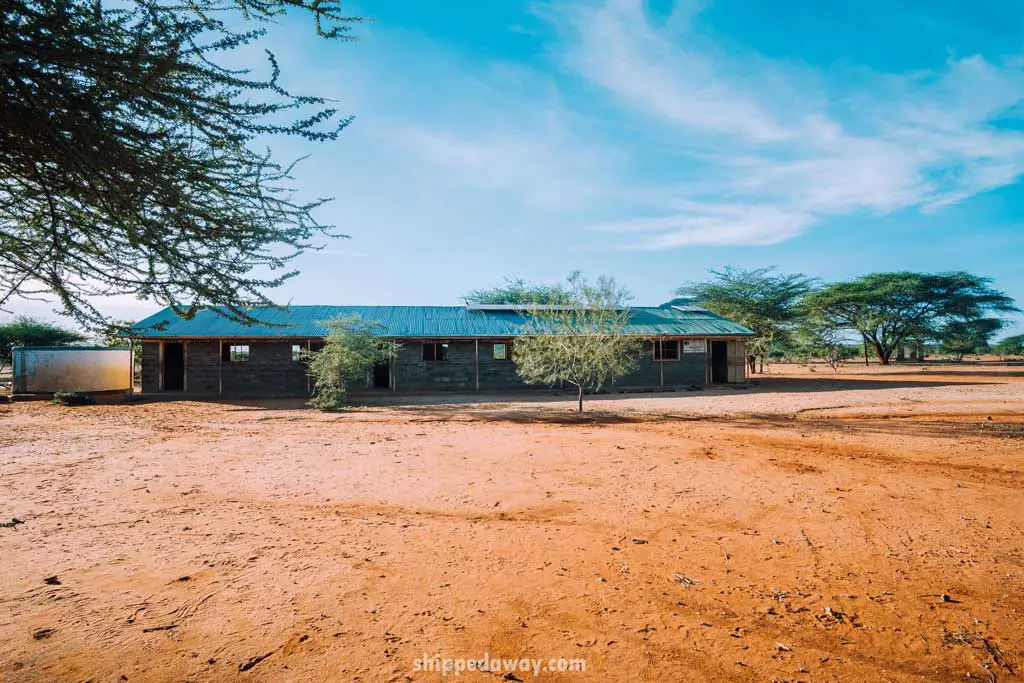
Although these cases are rare in this village and it mostly applies to boys. Girls are still getting married young to complete strangers. The situation is slowly changing for the better, but it’s still a bit messed up, at least for our understanding of the world. However, I was so happy to hear that Ngariyon’s oldest daughter, that was around 14 years old, wasn’t already married and they wanted to send her to high school. I’m not sure if that happened as it’s very expensive for them, but I hope for the best.
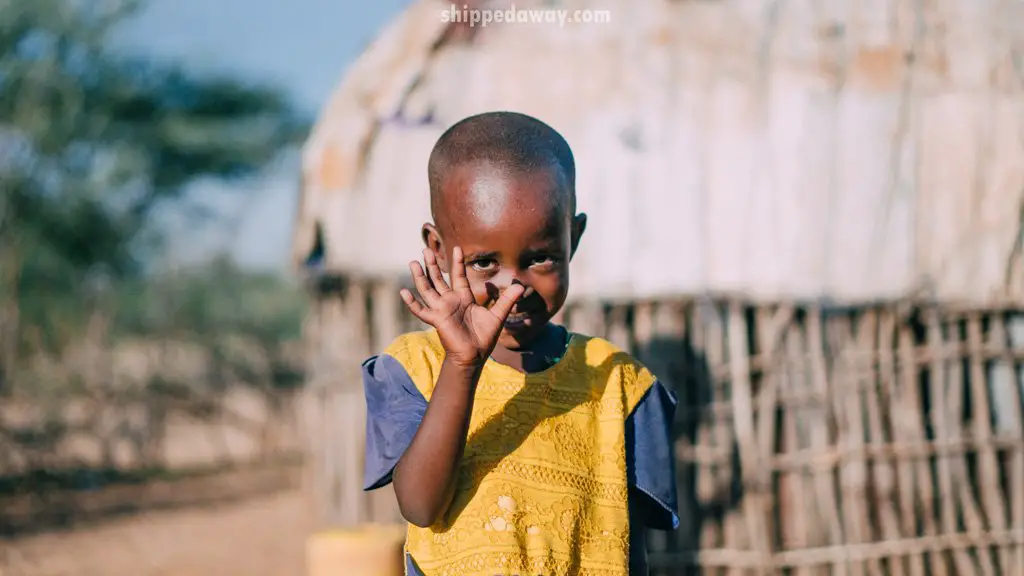
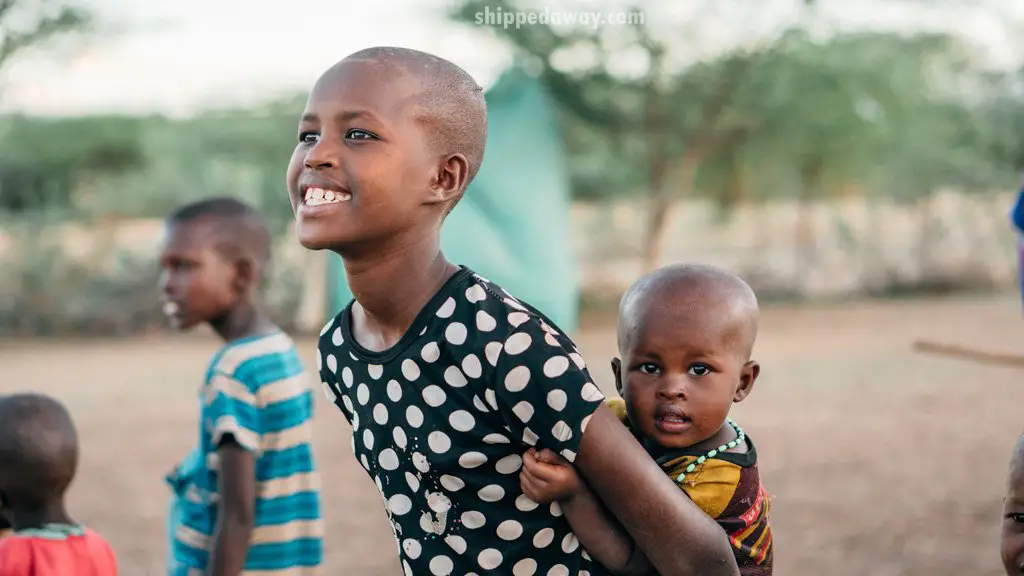

Praying session of the Maasai Samburu Tribe
The highlight of our trip was seeing women prepare for prayer. They put on special outfits made of cowhide and the best jewelry, paint their necks red, sing, and dance. They do it from the village to the cave which is about an hour away (and we went to the closer one!). When they are near the cave they pick up the grass and put it on their heads to bring to God as an offering. They also bless the cave with goat milk and water. Afterward, they sit, relax, and pray until the evening when they go home. Even though they are without food and water the whole day, they never stop singing and dancing.
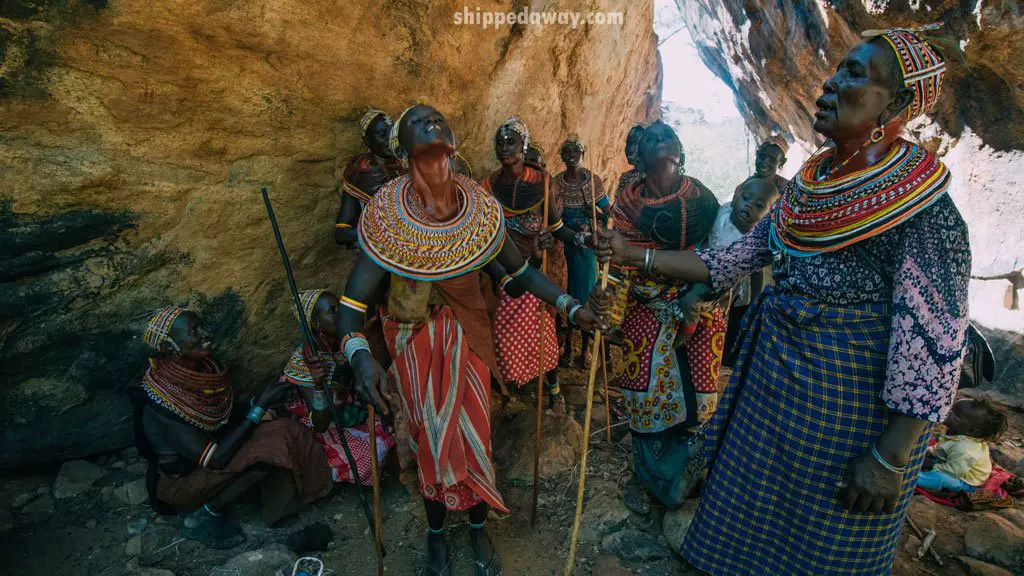
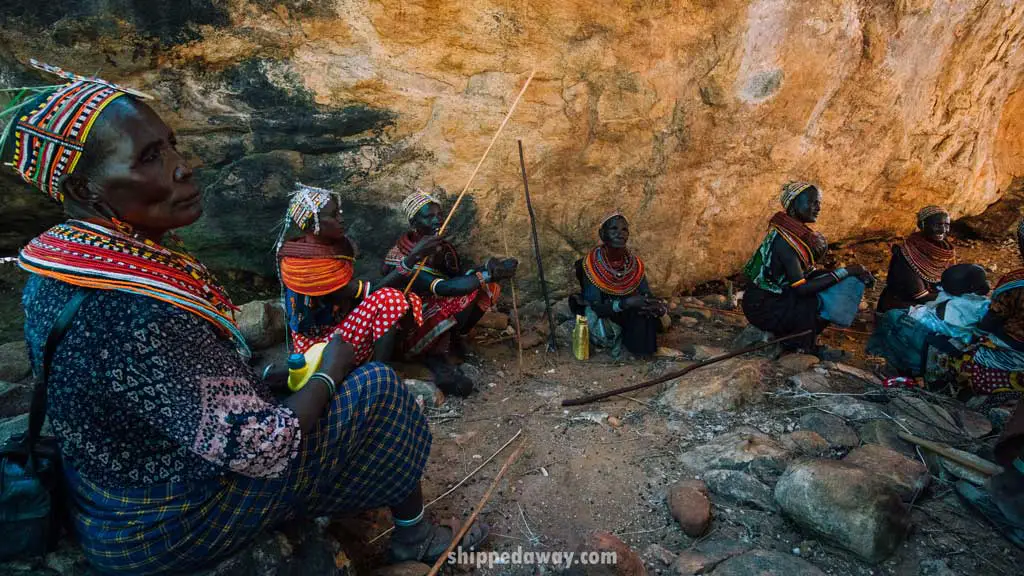
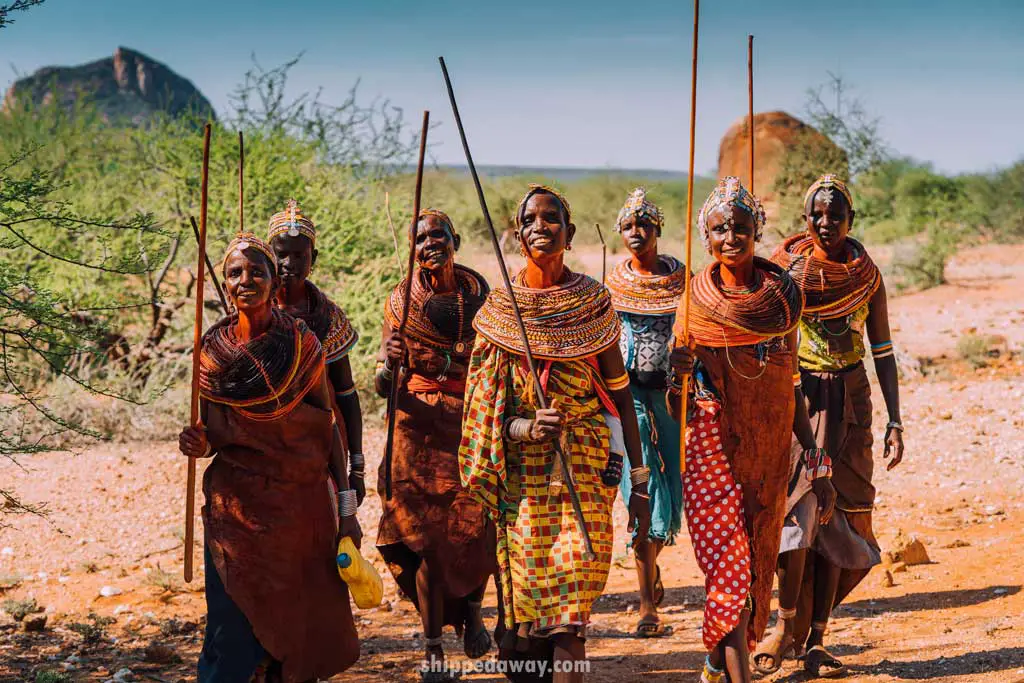
The tribe loves dancing
One afternoon the whole tribe presented us with their traditional dances. First, the men did their circumcision dance, and then women joined them, and they all danced together. I loved how passionate they all were and I got goosebumps while watching them. They moved their bodies as much as they can. I could probably never move in the way they did. The most important move of the dance is moving their head back and forth, much like a chicken, and then synchronizing the whole body to that move.
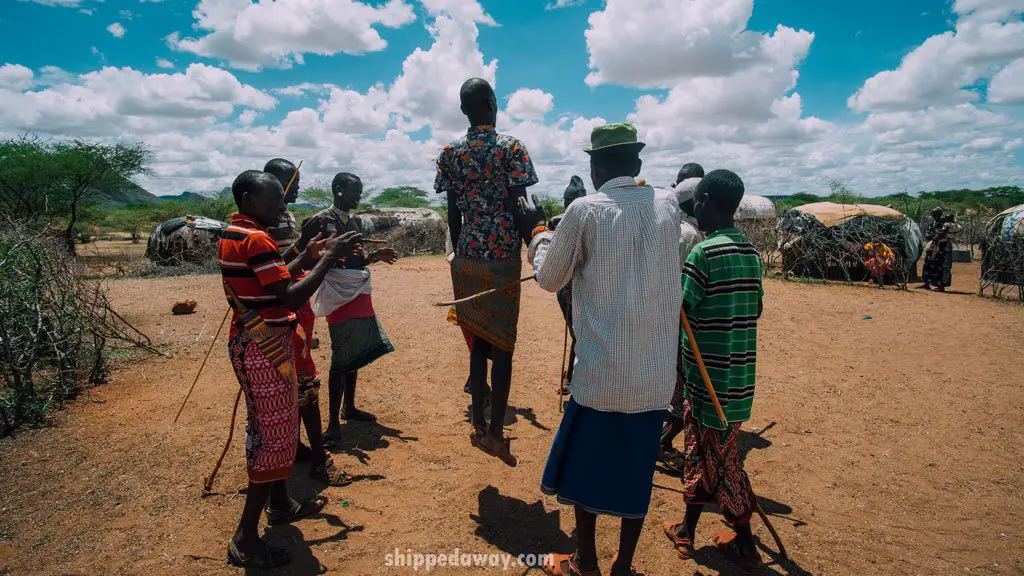
Conclusion
This was one of the best experiences of my life. Seeing how simple their life is and how these people appreciate the little things was amazing. But the thing I’ll remember forever will definitely be those beautiful smiles of the kids and the kindness of their people.

TRAVEL TIP: If you want to experience the real tribe life, you have to find a real, not tourism-oriented tribe. It will be a bit harder to find them, but it will be worth it.
